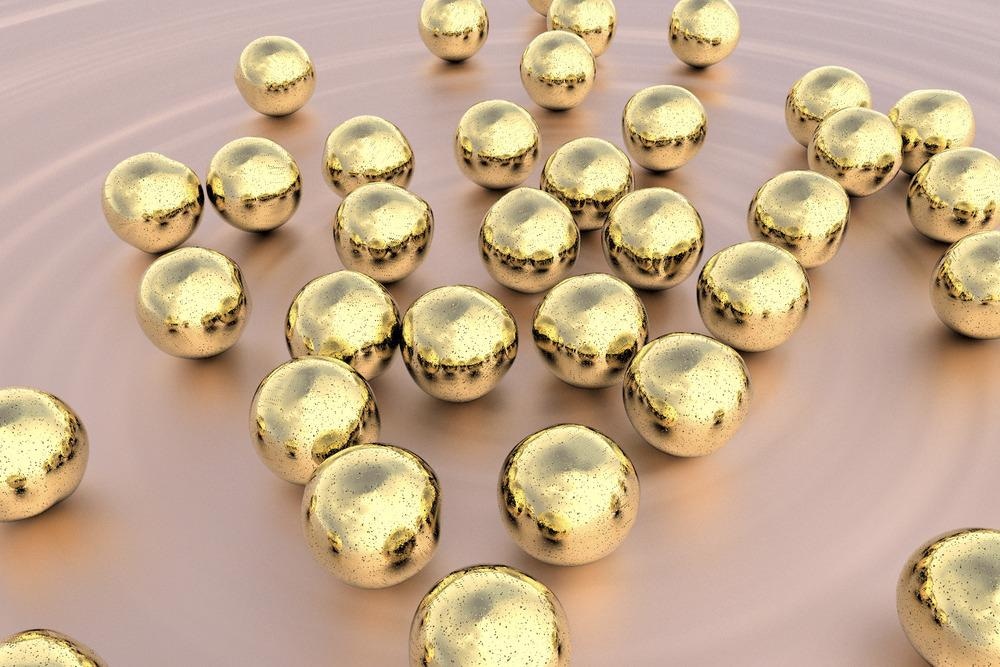In a study published recently in the journal ACS Nano, researchers detail the dielectric breakdown behavior in nano-dielectric materials when influenced by organic-inorganic interfaces, showing the impact of nanoparticle concentration and distribution on dielectric characteristics.

Study: Multiscale Characterization of the Influence of the Organic–Inorganic Interface on the Dielectric Breakdown of Nanocomposites. Image Credit: Kateryna Kon/Shutterstock.com
Benefits of Dielectrics
Growing energy needs and the requirement for better energy storage systems require the design of high-performance insulators with high power and energy concentrations, large dielectric energies, and ease of processing.
Dielectric capacitors are suited for high-voltage electrical power systems and modern electronic equipment. Because of their quick charging or discharging, they have a higher energy density when compared to alternative storage approaches.
The total energy concentration in the battery is therefore determined by the material's relative dielectric permittivity and is finally restricted by the dielectric breakdown strength of the film.
Ceramic dielectrics are widely utilized dielectric substances; however, they have a low dielectric failure toughness and poor degradability. Polymers, on the other hand, have a relatively low dielectric property but are versatile and readily processed materials with a high dielectric failure toughness.
The goal of nanostructured materials is to blend both these features to generate materials with improved functionality.
Importance of Organic-Inorganic Interface
The interfacial design of these materials frequently emphasizes such enhancements since the characteristics of the substance in nanoparticles cannot simply be seen as the summation of the properties of its elements. The improved operating resilience against dielectric breakdown in nanomaterials demonstrates the interface's critical role in shaping the final characteristics of the nanocomposite.
Determining the precise relationship between nanoscale surfaces and the material's overall macroscopic characteristics remains a challenging issue. The production of high-performance dielectrics is aided by accurately regulating the surface characteristics.
When nanoparticles (NPs) are mixed with a polymer matrix, they form a wide contact area that is extremely polar in nature and may condense a vast number of charge carriers per volume.
Ceramic nanomaterials placed in a polymer matrix may significantly improve the composite's relative dielectric permittivity. Nevertheless, due to a mismatch in the comparative dielectric properties of the nanoparticles and the polymer matrices, the electric field spreads non-homogeneously over the surface and focuses centrally in the polymer matrix, resulting in a significant reduction in corrosion rate.
Attempts to solve this challenge have mostly centered on interfacial technology via surface alterations and the usage of core-shell composites.
Various Methods to Improve Dielectric Efficiency
Using metallic nanoparticles distributed in a polymer matrix may help improve the dielectric efficiency of nanomaterials. Under an applied electric field, such nanoparticles are predicted to be polarised, filtering the electric field and exhibiting potentially infinite relative dielectric permittivity. Indeed, enormous relative dielectric permittivity rates for nanoparticles, including conductive polymers, have been recorded.
The conductive nanomaterials act as embedding conductors enclosed by a polymer dielectric, culminating in an arrangement of linked "nano capacitors" within the nanocomposite. This results in a significant increase in relative dielectric permittivity. Similar to grain-boundary barrier layer ceramic capacitors, polarisation of the dielectric between the nanoparticles enhances the visible relative dielectric permittivity.
Raising the filler loading to the saturation point, on the other hand, leads to the establishment of a conductive route along with the nanoparticles link. Consequently, a drastic loss of dielectric properties occurs.
Concluding Remarks
In this study, a complete breakdown of the processes of charge storage and dielectric properties in nanocomposites was presented by integrating studies on samples covering three orders of magnitude in size scale. Using gold nanoparticles on SAMs, it was shown how the chemical composition of the interaction affects its capacity to hold charges. DFT simulations indicated a geometrical modification that allowed considerable charge storage at the -NH2/Au interface, highlighted by the predicted charge density movement at that particular conjunction link.
The influence of these organic/inorganic interactions on the entire material characteristics was demonstrated by utilizing metallic nanoparticles as fillers in polymer matrices tens to hundreds of nanometres thick. While having no effect on dielectric characteristics at this microscopic scale, the inclusion of these inorganic fillers caused a considerable increase in corrosion rate in macroscopic level samples.
The findings of this study shed light on the influence and significance of the contact between an inorganic nanoparticle and an organic molecule on dielectric breakdown behavior. The results give insight into the unusual charge storage process that occurs at the organic/inorganic border, emphasizing its molecular specificity. The ultimate effect on the object's breakdown behavior turns out to be heavily influenced by system morphologies and nanoparticle loading, preferring distinct electron transport domains.
Reference
Pieters, P. F., Lainé, A. et al. (2022). Multiscale Characterization of the Influence of the Organic−Inorganic Interface on the Dielectric Breakdown of Nanocomposites. ACS Nano. Available at: https://pubs.acs.org/doi/full/10.1021/acsnano.2c01558
Disclaimer: The views expressed here are those of the author expressed in their private capacity and do not necessarily represent the views of AZoM.com Limited T/A AZoNetwork the owner and operator of this website. This disclaimer forms part of the Terms and conditions of use of this website.